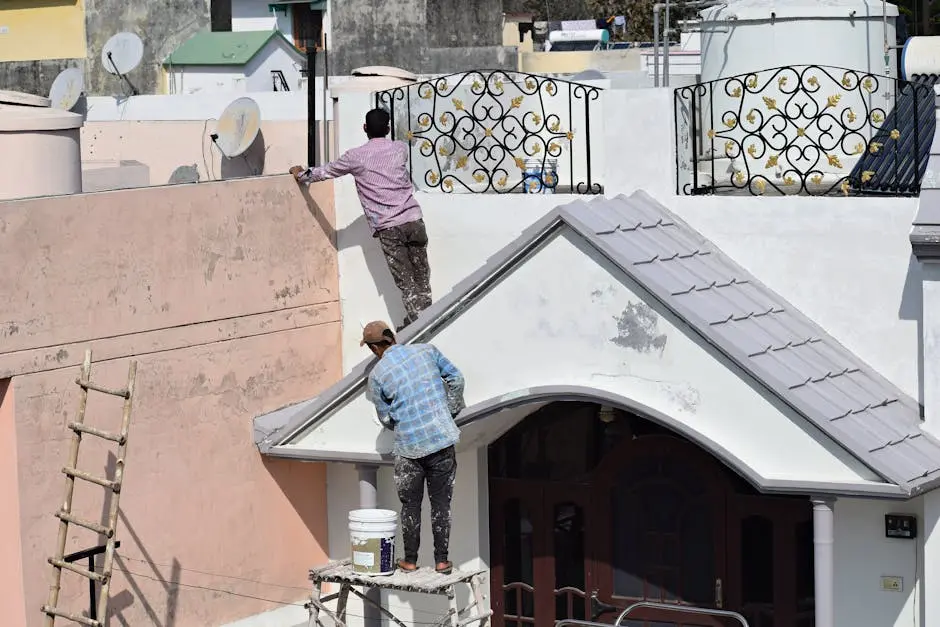Maintaining your roof is crucial for the longevity of your home. Each season brings its own set of challenges, and being proactive can prevent costly repairs down the line. Here are essential tips to keep your roof in top condition all year round.
1. Inspect After Winter Storms
After a harsh winter storm, inspecting your roof should be at the top of your priority list. High winds, heavy snowfall, and freezing temperatures can cause significant damage that may not be immediately visible. Start by checking for missing shingles, as they can easily be blown off during high winds. If you notice any dents or water stains on your ceilings, this could indicate a leak that requires prompt attention.
Additionally, look for any sagging areas along your roofline, which could indicate structural issues that need to be addressed. Consider using binoculars if you cannot safely get onto the roof yourself. If needed, hire a professional for a thorough inspection, as they can spot potential troubles that an untrained eye might miss.
2. Clear Debris in Spring
As the snow melts and spring arrives, it’s time to clear any leftover debris from your roof. Fallen branches, leaves, and other debris not only compromise the aesthetic appeal of your roof but can also trap moisture, leading to rot and mold growth. Grab a sturdy ladder and carefully remove any debris, starting from the peak of the roof and moving downward.
This is also the perfect opportunity to check for moss or algae growth, which can be detrimental to the integrity of your shingles. If you find any signs of growth, consider using a roof cleaner or hiring a professional service to treat it. Don’t forget to clean up the gutters while you’re at it, as this will help prevent water from pooling on your roof and causing additional damage.
3. Check for Loose Shingles
Loose shingles are a big concern that can lead to leaks and other serious issues if not addressed promptly. It’s vital to conduct regular checks, especially after storms. Look for shingles that are curled, cracked, or slipping out of place. Any damaged areas should be replaced immediately to avoid further complications.
A quick inspection can save you time and money in the long run. Use a roof sealant to secure any loose shingles temporarily until you can replace them. Always remember to take safety precautions if you decide to get on your roof. Consider wearing non-slip shoes and use a harness for added security!
4. Clean Gutters Regularly
Gutters play a crucial role in directing water away from your home, so it’s vital to keep them clean. Clogged gutters can lead to overflow, which can damage your roof and even cause leaks. To ensure proper drainage, clean your gutters at least twice a year—once in the spring and again in the fall.
When cleaning, use a sturdy ladder to access hard-to-reach areas and be cautious of any debris build-up. Consider installing gutter guards to keep larger debris out, which can save you time on maintenance. By maintaining clean gutters, you’re protecting not just your roof but also your home’s foundation from water damage.
5. Examine Flashing and Seals
Flashing and seals are essential components that protect your roof from moisture. They are typically installed around chimneys, vents, and other protrusions. Take the time to inspect these areas regularly, as worn or damaged flashing can lead to leaks. Look for signs of rust or gaps, and address these issues as soon as you spot them.
If you notice any tears in the sealant, consider reapplying it to create a watertight seal. For existing issues, hiring a professional might be your best bet to ensure that everything is correctly sealed and functioning as it should. Remember, a small leak can turn into a big problem if not managed properly.
6. Inspect Attic for Leaks
Regularly checking your attic is just as important as examining the exterior of your roof. During your attic inspections, look for any signs of water stains or mold, which can indicate leaks. Pay close attention to areas around vents and chimneys, as these are common places for moisture to infiltrate.
If you spot any issues, it’s crucial to fix them right away. Not only can a leak damage your roof, but it can also create a host of problems with your insulation and the overall air quality in your home. If you’re unsure how to proceed, seek help from a roofing professional to assess the situation accurately.
7. Trim Overhanging Trees
Trees can provide shade and aesthetic appeal to your home, but they can also pose a threat to your roof if not managed correctly. Overhanging branches can scrape and damage your shingles, while leaves can clog gutters. To prevent this, make it a habit to trim back any branches that are too close to your roof.
Regular trimming not only protects your roof but also helps maintain the health of your trees. Aim for a distance of at least six feet between branches and your roof. Additionally, consider the type of trees you plant near your home to minimize the risk of debris falling onto the roof.
8. Prepare for Summer Heat
As temperatures rise in summer, your roof can take a beating from the sun’s harsh rays. To prepare, first, ensure that your roof is well-ventilated to allow hot air to escape. Poor ventilation can lead to heat buildup, causing shingles to deteriorate faster.
Additionally, consider a roof coating designed to reflect sunlight. This can help keep the attic temperature cooler, leading to improved energy efficiency in your home. Regularly checking for any missed maintenance can go a long way in ensuring your roof remains strong during the sweltering months.
9. Check for Ice Dams in Winter
Ice dams are a common issue during winter, especially in areas that experience heavy snowfall. When snow melts on your roof due to trapped heat, it can refreeze at the eaves, creating a dam that traps water. This water can seep under your shingles and cause leaks.
To prevent ice dams, ensure your attic is properly insulated and ventilated. In addition, consider using a roof rake to remove snow from the edges of your roof after heavy snowfall. This simple act can help reduce the chance of water pooling and forming ice dams.
10. Schedule Professional Inspections
While regular DIY inspections are essential, scheduling professional inspections at least once a year is equally important. Roofing experts have the knowledge and tools to identify issues that may not be immediately noticeable. They can assess your roof for potential vulnerabilities and recommend any necessary repairs.
Professional inspections should ideally be done in the spring or fall, when weather conditions are more favorable. This proactive step can help maintain the longevity of your roof and give you peace of mind as a homeowner. Don’t wait for a problem to arise; investing in professional help can save you from costly repairs down the line.







